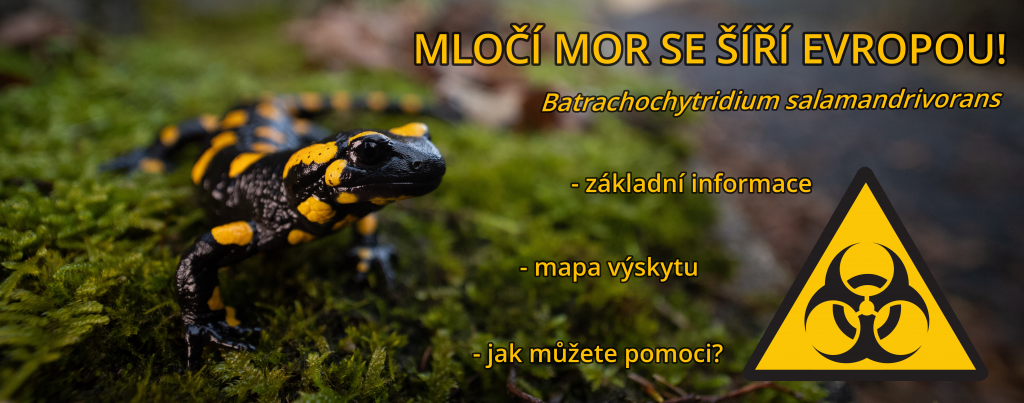Chytridiomycosis is a fungal disease of amphibians caused by infestation with one of two known species of fungi of the genus Batrachochytridium.

Infoblock:
- Amphibian fungal disease that is invasively spreading in Europe
- Batrachochytridium dendrobatidis (Bd) and B. salamandrivorans (Bsal)
- Bsal extremely dangerous to the salamander
- It spreads on everything wet
- Bsal in Europe in the wild so far discovered in the Netherlands, Belgium, Germany and Spain
- Does not tolerate high temperatures (above 35°C)
Two species
Longer known is Batrachochytridium dendrobatidis (Bd), which was discovered as early as 1999 and has since been found present around the world. In several cases, the disease significantly contributed to the loss of amphibians, especially frogs, and sometimes to their complete extinction.
In 2013, another species of this fungus B. salamandrivorans (Bsal) was discovered in the Netherlands on the basis of suspicious salamander mortalities, which is much more dangerous due to its mode of spread and high mortality rate. This species mainly attacks tailed amphibians and is especially dangerous for the fire salamanders, which almost always die from it.
Both species originate in Southeast Asia and were probably distributed around the world through animal trade. Thus, Bd got practically all over the world. However, this species is not so dangerous, as a large proportion of amphibians are resistant to it and infected individuals can be effectively treated. Unfortunately, this is not the case with the later described Bsal, which forms resistant spores capable of surviving a wider range of temperatures and humidity. Apart from its homeland (SE Asia), this mold has so far only been found in a few European countries, where it has caused considerable environmental damage. For example, it caused the extinction of the fire salamander in the Netherlands. The disease probably got to Europe from the amphibian trade, but its spores are transmitted on everything wet, including the soles of shoes and the feet of wading birds.
What are the scientist doing about that?
Researchers are now trying to find out as much information as possible about this disease (Bsal). In our country, the Faculty of the Environmental Sciences, CULS in Prague is in charge of this. A team of experts led by doc. Ing. Jíří Vojar, Ph.D. examined the spread of the disease since its discovery. Of the more than a thousand samples from various parts of Europe, only a few proved positive. In the Czech Republic, this pathogen (Bsal) has not yet been discovered either in captive collections or in the wild. Bd has been confirmed in our country, however, it does not seem to significantly affect the local amphibians.
We (Herpetology.cz) also took part in an expedition to northern Spain in 2017, where our team of scientists managed to detect the occurrence of Bsal in 5 individuals of newts (Lissotriton helveticus) from two different localities in the areas of Asturias and Cantabria. See video and photo-report from the expedition. See also professional publication (Lastra González et al., 2019).
What you can do?
- Disinfect or at least heat treat (35 + ° C) and dry your shoes after returning from a walk in the woods where there are salamanders or newts present
- Report sudden death of amphibians to nature conservation authorities or email us immediately
- To raise awareness about this dangerous disease among your friends
- If you are an amphibian keeper, have your animals tested for Bd and Bsal
